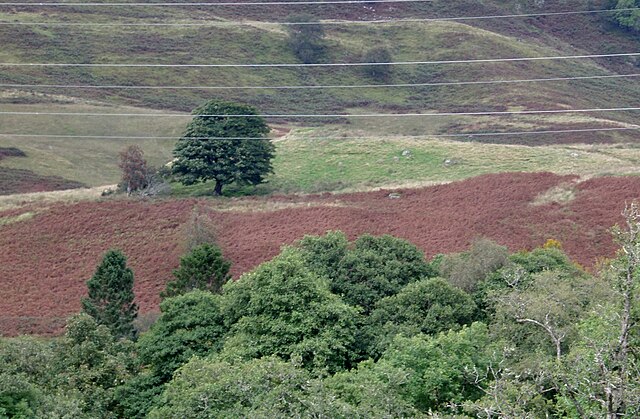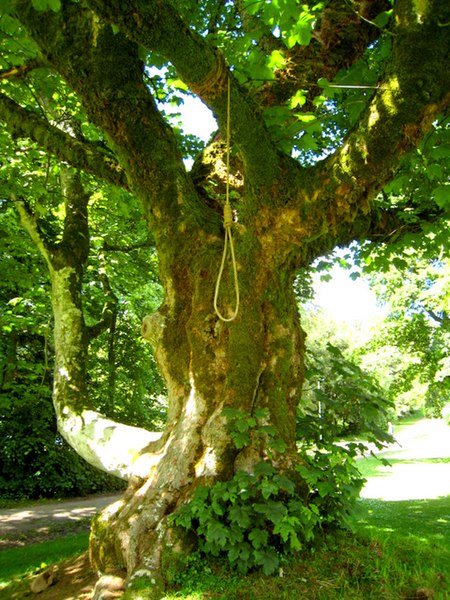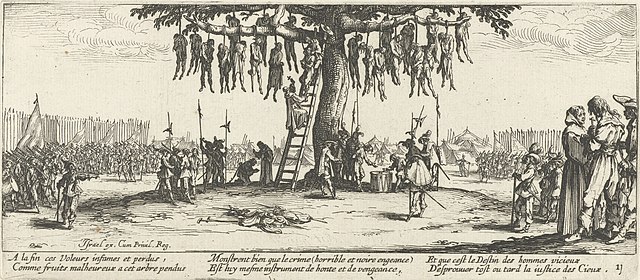Dule trees, or dool trees, in Britain were used as gallows for public hangings. They were also used as gibbets for the display of the corpse for a considerable period after such hangings. These "trees of lamentation or grief" were usually growing in prominent positions or at busy thoroughfares, particularly at crossroads, so that justice could be seen to have been done and as a salutary warning to others. Place names such as Gallows-Hill, Gallows-See, Gallows-Fey and Hill of the Gallows record the site of such places of execution.
Tom Nan Croiche (Hill of the Gallows) at Dalmally in Scotland
The Moot Hill, or Law Mount, above the River Annick near Castleton Farm, Stewarton, Ayrshire
The Dule Tree, at Leith Hall
A gallows is a frame or elevated beam, typically wooden, from which objects can be suspended or "weighed". Gallows were thus widely used to suspend public weighing scales for large and heavy objects such as sacks of grain or minerals, usually positioned in markets or toll gates. The term was also used for a projecting framework from which a ship's anchor might be raised so it is no longer sitting on the seabed, riverbed or dock; "weighing [the] anchor" meant raising it using this apparatus while avoiding striking the ship's hull.
Unidentified men wait at the gallows before execution of Melquiades Chapa and Jose Buenrostro on May 19, 1916, in Brownsville, Texas.
Illustration of hanging during the Thirty Years' War
These gallows in Tombstone Courthouse State Historic Park are maintained for historical purposes by Arizona State Parks.
New Drop gallows in Rutland County Museum







